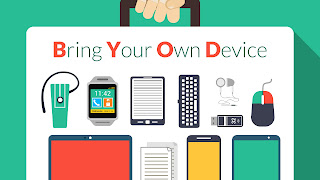Twitter Feed
Transformation Network
The Achilles heel of every transformative business model is their reliance on ever increasing amounts of data that need to be transported quickly across wide area networks and processed at…
Essential Characteristics of Cloud Computing as Digital Transformation
Hybrid IT blends traditional datacenters, managed service providers, and cloud service providers to deliver the necessary mix of information technology services. This IT consumption model enables a composable infrastructure which…
Transformation Innovation
4 Factors Driving Digital Transformation ROI The critical assessment factors for cloud ROI risk probability are the following: Infrastructure utilization Speed of migration to cloud Ability to scale business/mission processes…
Transformation Frameworks
Digital transformation necessitates changes in an organization’s operational processes. According to Harvard, a focus on operations can lead to business process optimization and entirely new revenue streams. Three common routes…
Transformation Infrastructure
Hybrid IT enables a composable infrastructure which describes a framework whose physical compute, storage, and network fabric resources are treated as services. Resources are logically pooled so that administrators need…
Essential Characteristics of Cloud Computing as Digital Transformation
A survey of 2,000 executives conducted by Cognizant in 2016 identified the top five ways digital transformations generate value: Accelerating speed to market Strengthening competitive positioning Boosting revenue growth Raising…
Embrace Transformation
From a business perspective, differentiating business processes and quality customer service are central to overall success. Business leaders must therefore clearly identify and measure how information technology contributes to the…
Computer Vision Advances Zero-Defect Manufacturing
by Kevin L. Jackson Electronics manufacturers operate in a challenging environment. It’s hard enough to keep up with the ever-accelerating rate of change in the industry. Now customers want increasingly…
Real-Time Analytics Power the Roadway of the Future
By Kevin L. Jackson The complexities of citywide traffic are pushing the limits of existing transportation management systems. Outdated infrastructure is based on proprietary, single-purpose subsystems, making it costly to…
Thriving on the Edge: Developing CSP Edge Computing Strategy
Communications Service Providers (CSPs) are facing significant business model challenges. Referred to generally as edge computing, the possibilities introduced by the blending of 5G networks and distributed cloud computing technologies are…
- Increased employee mobility (63%), satisfaction (56%) and productivity (55%) dominate as the top drivers of BYOD. These employee related drivers are considered more important than reduced costs (47%).
- Security (39%) and employee privacy (12%) are the biggest inhibitors of BYOD adoption.
- 20% of surveyed organizations have suffered a mobile security breach, primarily driven by malware and malicious WiFi.
- Security threats to BYOD impose heavy burdens on organizations’ IT resources (35%) and help desk workloads (27%).
- Despite increasing mobile security threats, data breaches and new regulations, only 30% of organizations are increasing security budgets for BYOD in the next 12 months and 37% have no plans to change their security budgets.
- 72% – Data leakage/loss
- 56% – Unauthorized access to company data and systems
- 54% – Downloading of unsafe apps or content
- 52% – Malware
- 50% – Lost or stolen devices
- 49% – Vulnerability exploitation
- 48% – Lack of control on endpoint security
- 39% – Infrequent software updates
- 38% – Compliance
1. Create your policy before procuring technology: To effectively use mobile device management (MDM) technology for employee owned devices Policy must precede technology. Also note that these policies will have broad corporate-wide implications for IT, HR, legal, and security.
- Mobile device management
- Application security assessments
- Application testing services
- Application source code security assessments; and
- Embedded device security.
This post was brought to you by IBM Global Technology Services. For more content like this, visit ITBizAdvisor.com.
( Thank you. If you enjoyed this article, get free updates by email or RSS – © Copyright Kevin L. Jackson 2017)
Cloud Computing
- CPUcoin Expands CPU/GPU Power Sharing with Cudo Ventures Enterprise Network Partnership
- CPUcoin Expands CPU/GPU Power Sharing with Cudo Ventures Enterprise Network Partnership
- Route1 Announces Q2 2019 Financial Results
- CPUcoin Expands CPU/GPU Power Sharing with Cudo Ventures Enterprise Network Partnership
- ChannelAdvisor to Present at the D.A. Davidson 18th Annual Technology Conference
Cybersecurity
- Route1 Announces Q2 2019 Financial Results
- FIRST US BANCSHARES, INC. DECLARES CASH DIVIDEND
- Business Continuity Management Planning Solution Market is Expected to Grow ~ US$ 1.6 Bn by the end of 2029 - PMR
- Atos delivers Quantum-Learning-as-a-Service to Xofia to enable artificial intelligence solutions
- New Ares IoT Botnet discovered on Android OS based Set-Top Boxes












